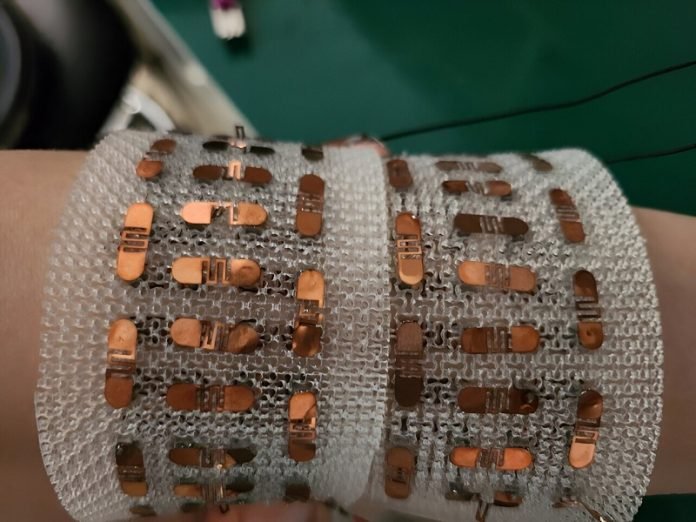
Researchers from the Energy Conversion Materials Research Center at the Korea Electrotechnology Research Institute (KERI) have made a groundbreaking leap in wearable technology.
Dr. Hyekyoung Choi and Min Ju Yun’s team have developed a new type of thermoelectric generator that is not only highly flexible but also incredibly efficient.
This advanced technology, detailed in their publication in Advanced Energy Materials, could transform how we power wearable devices.
Let’s break down what they’ve done and why it’s so exciting. First, understand what a thermoelectric generator is: it’s a device that turns temperature differences into electrical energy.
It’s a promising eco-friendly technology because it can use the heat we usually waste in everyday life and convert it into electricity.
However, until now, there’s been a big challenge. Most thermoelectric generators are made with hard materials, like ceramic PCB, which aren’t ideal for curvy surfaces like human skin or the bends of hot water pipes.
To make these generators more adaptable, researchers tried using flexible materials like silicon and polymers. But these materials had a downside – they conducted heat too well, leading to a loss of efficiency.
This is where the KERI team’s innovation shines. They used what are called “mechanical metamaterials” to create a new kind of stretchable thermoelectric generator.
Metamaterials are artificial materials with properties not found in nature. Think of it like this: if you stretch a rubber band, it gets thinner. But metamaterials can be designed to expand in both directions when stretched.
The KERI team incorporated a special gasket made from this metastructure into their thermoelectric generator. This gasket increased the device’s stretchability by up to 35% while maintaining its structural stability.
The generator can now bend and stretch like human skin, making it easy to attach anywhere.
But that’s not all. The gasket also contains air gaps, which act as excellent insulators. These gaps reduce heat loss, increasing the temperature difference across the generator by up to 30% compared to other flexible generators. This higher temperature difference means higher efficiency.
In terms of numbers, KERI’s new generator is a game changer. It’s not only 35% more stretchable but also produces power more efficiently, with a power production density more than 20 times higher than previous models.
Even when stretched a lot, the generator doesn’t lose its electrical properties. Plus, it’s incredibly durable, maintaining performance even after being bent more than 10,000 times.
Dr. Choi emphasizes that this breakthrough was possible thanks to their expertise in developing high-performance thermoelectric materials and their dedicated approach to creating stable, self-powered devices.
This convergence of skills and knowledge allowed them to consider every aspect of the technology, from its creation to its real-world application.
The implications for this technology are vast. Wearable devices, like those used in the Internet of Things (IoT) and AI, often rely on separate power sources like batteries.
With KERI’s thermoelectric generator, these devices could be powered just by being attached to the body, utilizing body heat to generate electricity. This could also lead to significant advancements in medical technology.
The KERI team’s work is a big step toward a new era of eco-friendly energy harvesting. They are continuing to improve the technology, focusing on better cooling techniques and power management circuits to enhance the performance of thermoelectric generators.
This research not only represents a technical achievement but also paves the way for a future where our devices could be powered in a more sustainable, efficient, and convenient way.



